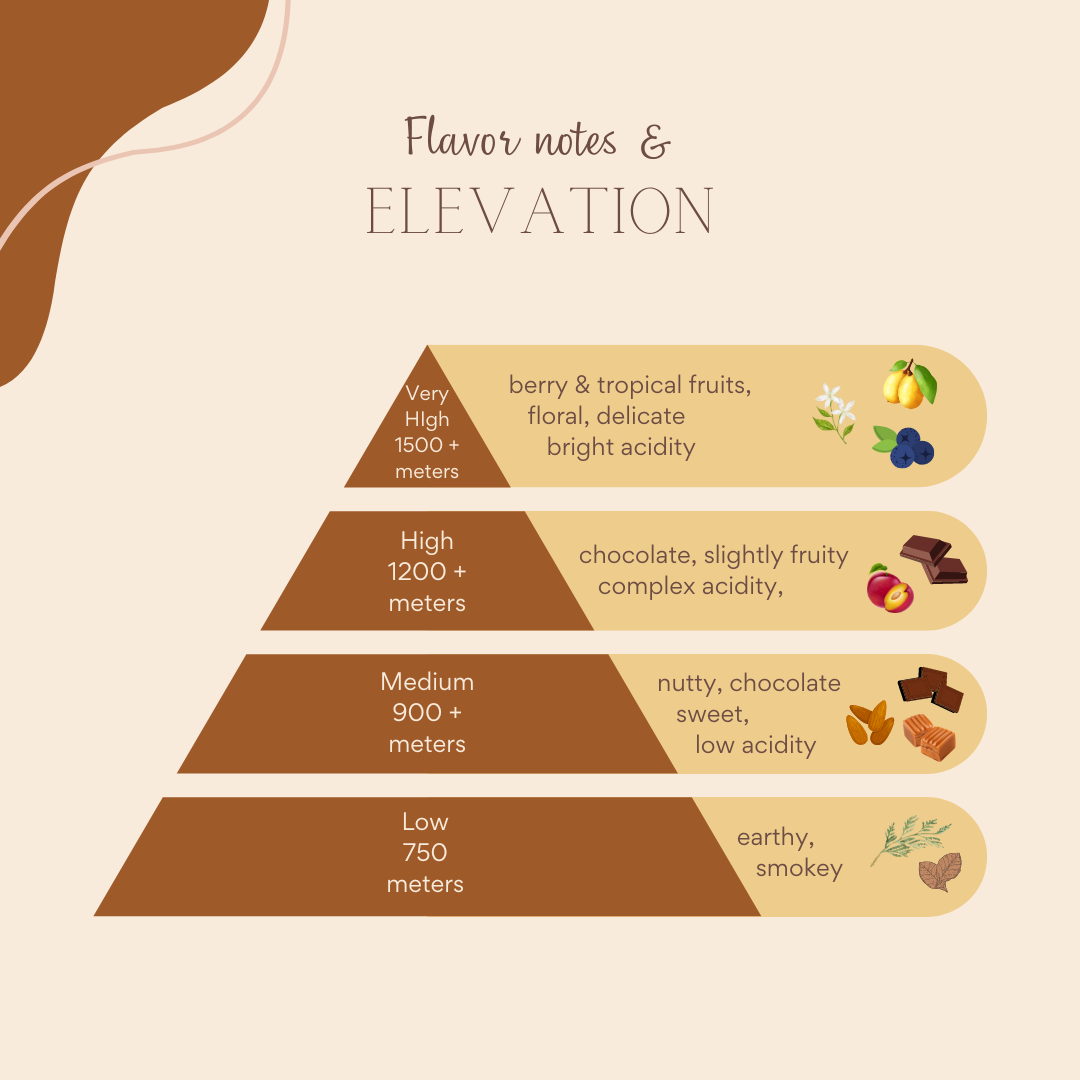Origins, flavor notes and elevation

While we always list the flavor notes that we detect when we cup coffees on our product bags, we also like to have more detailed descriptions about the coffees, on our website - where they are grown, and who they are grown by.
Elevation is always listed to help you with your decisions about which coffees to purchase based on your taste preferences and the acidity levels you enjoy.
The higher the elevation, the longer it takes for the coffee cherries to ripen. This delay in ripening allows the cherries to develop more sugars that create interesting flavors and acidity. Coffees grown at very low elevations are exposed to harsher growing conditions (less rainfall, higher temperatures, less sunlight) and tend to exhibit less acidity.
We created this little graphic to help you.

Coffee regions that are grown above 1500 meters above sea level (MASL) are considered "very high elevation". These coffees are typically from Colombia, Ethiopia, Kenya, Tanzania, and some areas of Costa Rica. These are the coffees that will have pronounced berry, tropical fruit, and delicate floral notes and will have a "bright" acidity.
Coffees that are grown between 1200 - 1500 meters are considered "high elevation coffees". These are the ones with chocolate and darker fruit, for example, stone fruits and apple. These have a complex acidity to them.
Coffees grown between 900 - 1200 meters are medium elevation coffees. Notes of chocolate, vanilla and nut dominate here. These are smooth and sweet with lower acidity.
Coffees grown below 900 meters are typically Hawaiian coffees such as Kona, and Maui, but Panama also fits here.
Here is a basic list of coffee regions by continent and their altitudes for easy reference. Of course, there are different regions within each country that have differing elevations that support coffee growing which is why flavor notes can vary from one part of the country to another. (For example, Terruna Nayarit & Oaxaca regions of Mexico.) Even the slope on a particular farm might vary by 50-100 feet resulting in different flavor notes from coffees grown on the same farm.
Central America
Mexico - 900- 1600 MASL
Costa Rica - 1200-1900 MASL
El Salvador - 1200-1500 MASL
Guatemala - 1200-1700 MASL Honduras - 1100 - 1600 MASL
Nicaragua - 1200 MASL
Panama - 700-1070 MASL
South America
Brazil - 900-1100 MASL
Colombia - 1200-2300 MASL
Peru - 1000 - 1800 MASL
Africa
Burundi - 1800 MASL
Ethiopia - 1500-2200 MASL
Kenya - 1400-2000 MASL Tanzania - 1400 - 2000 MASL Uganda - 1200 MASL
India - 1300 MASL
Island
Dominican Republic - 1200 MASL
Haiti - 1200 MASL
Java - 1200 MASL
Kona - 250 - 760 MASL
Papua New Guinea - 1200-1800 MASL
Sumatra - 1000 - 1400 MASL
Elevation is just one part of many that comes together just right in order to create beautiful, truly special coffees. Even still, for many producers, traders, roasters, and coffee drinkers, it offers a significant clue about the potential of a coffee.